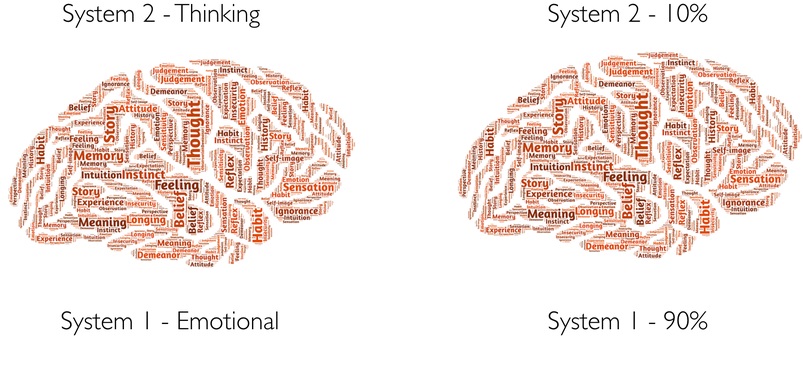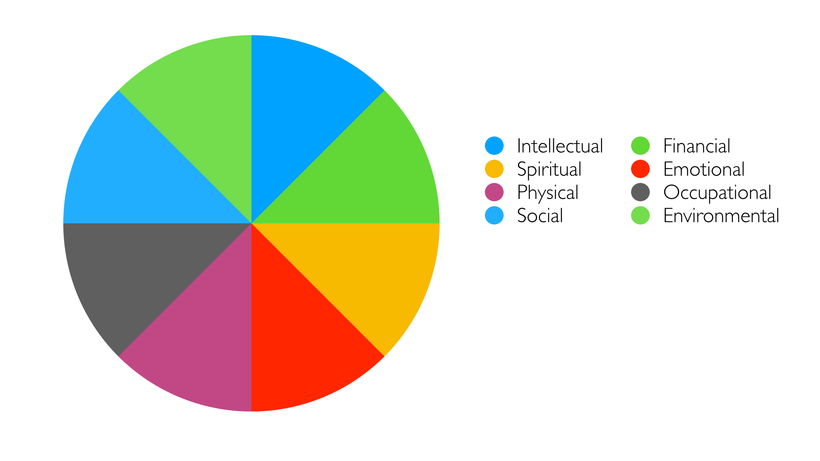Pic: The Eight Dimensions of Wellness
Introduction
Wellness is “A conscious, self-directed and evolving process of achieving full potential.”
– The National Wellness Institute
According to UC Davis, Wellness is an active process of becoming aware of and making choices toward a healthy and fulfilling life. Wellness is more than being free from illness, it is a dynamic process of change and growth.
Why Wellness Matters
UC Davis defines ‘Wellness Matters’ as ‘Maintaining an optimal level of wellness is absolutely crucial to live a higher quality life. Wellness matters because everything we do and every emotion we feel relates to our well-being. In turn, our well-being directly affects our actions and emotions. It’s an ongoing circle. Therefore, it is important for everyone to achieve optimal wellness in order to subdue stress, reduce the risk of illness and ensure positive interactions’.
We know that 90% of our decision making process is influenced by our emotions. The rest 10% contributes to logical influence in our decision making process. It is imperative that we focus on emotional well-being as it affects physical, financial and other aspects of our lives.

Today more than ever before the need of the hour is help employees to attain holistic wellness by learning new skill sets to cope with the challenges and adapt to new realities in their lives. The automation process has already begun with the advanced technologies like Artificial Intelligence, Robots, Drone, Augmented Virtual Reality and Mixed Reality that will reduce significant number of employees . This will involve many corporations letting go of their employees in hundreds and thousands while at the same time they will need to minimize the impact and help employees overcome many or some of the life transitions; job loss, financial stress, physical stress, emotional stress, strained relationships which will lead them to feel angry and unhappy about their employers. We believe that a continuous learning and development program to support employees to transition and transform through upskilling, reskilling and unlearning will help them prepare to be more resilient and feel confident about their futures. It turns out that the approach of caring helps in better relationships between the employer and employees by retaining or improving the corporation’s branding and culture.
How can employers deliver Holistic Wellness Programs on a mass customisation model
We believe a well defined holistic wellness program requires thought leadership, strategic planning and execution on a mass customisation model as the near and medium term impact is enormous for corporations. The need of the hour is to design and execute programs on a mass customisation model and reach out to employees to make a difference in their lives; with majority of the population being in the age group of 20-35 and 35-45 years. The Digital Wellness Platform can fill this gap effectively due to the following factors:
- Immersive learning and outcome driven model
- 24×7 access across devices
- Minimal cost per employee as compared to higher costs of onsite learning programs, limitations of achieving scale and uniform standards of excellence.
- Customised byte-sized modules for continuous learning and development; age and gender agnostic platform leads to high engagement levels, empowerment, and fun way to learn through gaming and challenges through badges to brag helps motivate employees.
- Of course, we strongly believe any program must have a human touch to achieve the desired behavioral change through a holistic coaching process and well supported networks.
- Better data and analytics help design and implement a ‘Nudge’ Program on a mass customisation model and process that will transform the lives of a large number of employees and achieve a holistic well being in their lives.
As John Phillips, Senior Vice President, Pepsico Inc says, “We will continue to see a convergence of the digital and physical world. Those who conquer that trend will be the market leaders.”
Image Source Credits : Eight Dimensions of Wellness – UC Davis, Brain Credits – Rick Kahler of Kahler Financial Group and Author of ‘Thinking Fast and Thinking Slow by Daniel Kahneman
This post by Partha Iyengar was first published in Huffington Post






0 Comments